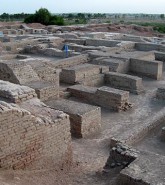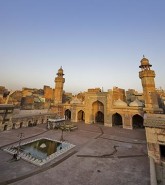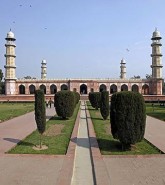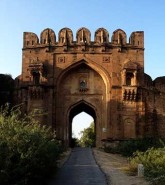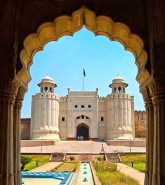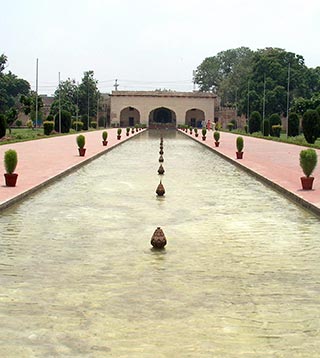
Lahore is famously known as the city of gardens as you will see a number of eye catching gardens in this historic city. Some of the gardens are newly constructed but the main beauty of the city is with its historic gardens which are still well maintained and give a charismatic visual appeal to the visitors. The historic Shalimar Garden is one top tourist attraction in the city which has historic relevance. It is also famously known as the ‘Shalamar Gardens’. The gardens are part of the Mughal era which was completed in a record time of 1 year in 1642. The credit of the place goes to the then Emperor Shah Jahan who was known for his love for nature and construction. This extreme collage of nature and constructional artwork was accomplished under the project management of Khalilullah Khan who was a renowned noble of the Emperor’s court. Shalimar name meaning is still an unresolved mystery as the historians are yet to confirm that whether it came from Arabic or the Persian origin. The place is located close to Baghbanpura on the GT road which is in the northeast direction at a distance of 5KM from the city center of Lahore.
History:
The site of the historic Shalimar Gardens was the property of Arain Mian Family of Baghbanpura. Shah Jahan rewarded them with the ‘Mian’ royal title for its services and contribution to the then Mughal Empire. The head of the family, Mian Muhammad Yusuf surrendered the property of to the Mughal Empire as he was pressurized by the Royal engineers. They were interested in that particular location because of its ideal positioning and the quality of the soil. But, Shah Jahan as a return favor granted the Mian family with the governance of Shalimar Gardens. It remained under their governance for nearly 350 years.
Field Marshal Ayub Khan nationalized the place in the year 1962 because the Arain Mian Family opposed him with his Martial Law imposition in the country. The lively festival of Mela Chiraghan was an yearly event until 1958when Field Marshal General Ayub ordered against it.
Architecture:
The architecture of Shalimar is incredible with its oblong parallelogram shape which is covered from all sides with a high brick wall. The wall is an attractive sight to watch because of its stunning intricate fretwork. The concept of the garden was based on Char Bhagh. The dimensions of the garden from north to south are 658 meters and from east to west are 258 meters which is a reasonably vast area. UNESCO in the year1981 included Shalimar Gardens in its World Heritage Site along with the Lahore Fort in the year 1972 for its unique construction and relevance with history of the era.
The Unique Terraces of the Garden:
The garden is an attractive site primarily because of its unique 3-level terraces going from south to the north side of the garden. The terraces are at a height of about 5 meters one above the other with a same level of distance. All the 3 terraces have their specific names which are given as follows:
- The top terrace which is at the highest elevation at the third level is known as ‘Farah Baksh’ in Urdu which literally means ‘Bestower of Pleasure’ in English.
- The mid level garden which is at the 2nd level is known as ‘Faiz Baksh’ which has the literal meaning of ‘Bestower of Goodness’.
- The lower garden which is at the lowest elevation at first level is known as ‘Hayat Baksh’ in Urdu which literally means ‘Bestower of Life’.
Fountains:
The fountains of the Shalimar Gardens are the highlight of the place which gives a mesmerizing feeling when they are all in full swing. Astonishingly, the garden has as many as 410 canals which are powered from the nearby canal. The water through the fountains discharges itself into the incredibly awesome white marble pools. They are well engineered at such old time and all the credit for such a phenomenal fountain system goes to the Royal Engineers and the Mughal Emperor Shah Jahan for coming up with this masterpiece of work. Their engineering was so good that even the contemporary engineers of today find it hard to comprehend the associated water system of the fountains even by referring the architectural blueprints of thermal engineering. The garden area surrounding the fountain is very cool because of the fountains flowing. It give the visitors of the gardens a very soothing feel particularly in blistering summer season in the country when temperatures may rise closer to 50 degrees. The distribution of the 410 fountains in the gardens goes as follows:
- The upper terrace has a total of 105 fountains.
- The mid level terrace contains 152 fountains.
- The lower level terrace has the highest number of fountains at 153.
Buildings of the gardens:
The Shalimar Gardens are not just all about greenery and fountains but it also has a range of buildings with stunning architecture which is worth having a look at. The buildings were constructed for different purposes that serve the Royal family and the visitors of the time as well. The building structures in the Shalimar Gardens include the following:
- Sawan Bhadun Pavilion
- Aiwan (The Grand Hall)
- Hammam (The Royal Bath)
- Naqar Khana
- Aramgah (The Resting Place)
- Begum Sahib Khawabgah (Bedroom of the Emperor’s wife)
- Diwan-e-Khas-o-Aam (Hall for the ordinary and special visitors to the Emperor)
- Baradaries (The summer pavilions for enjoying nearby fountain coolness)
- 2 Gateways
- Minarets situated at the corners of the garden
In the present day, it is reasonably in good shape and it serves the citizens of Lahore as one of the best place to visit. The visitors to Lahore find their tour to be incomplete if they miss out in visiting the Shalimar Gardens. It is an excellent place and lots of work needed to be done for its proper preservation and timely maintenance work.
